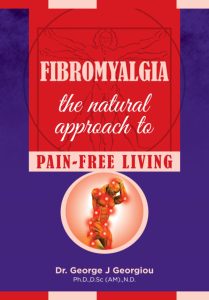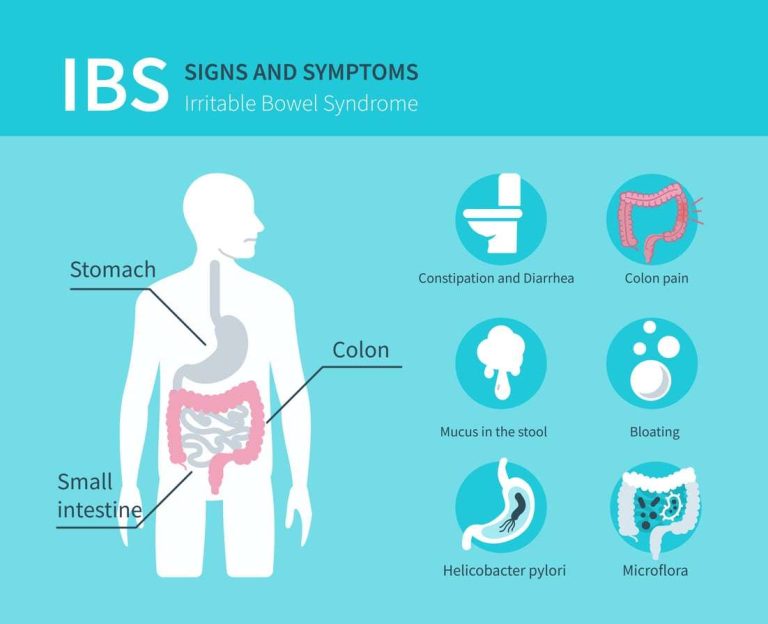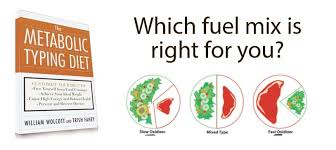What Is the Mediterranean Diet?
The Mediterranean diet “is characterized by abundant plant foods (fruit, vegetables, breads, other forms of cereals, beans, nuts and seeds), fresh fruit as the typical daily dessert, olive oil as the principal source of fat, dairy products (principally cheese and yogurt) and fish and poultry consumed in low to moderate amounts, zero to four eggs consumed weekly, red meat consumed in low amounts, and wine consumed in low to moderate amounts, normally with meals. This diet is low in saturated fat (less than or equal to 7-8% of energy) with total fat ranging from less than 25% to greater than 35% of energy throughout the region.”
This, according to the Diet Dictocrats, is the diet that we should adopt to protect ourselves from chronic disease, especially heart disease. The author of this theory, and the first to describe the Mediterranean diet in these terms, was Ancel Keys, architect of the lipid hypothesis, namely that heart disease is caused by “the major dietary villain,” saturated fat from meat and dairy products.2 According to Keys, his introduction to the Mediterranean diet began in the early 1950s when he was a visiting professor at Oxford. In 1951, he chaired the first conference of the Food and Agriculture Organization of the United Nations at their headquarters in Rome. “The conference talked only about nutritional deficiencies. When I asked about the diet and the new epidemic of coronary heart disease, Gino Bergami, Professor of Physiology at the University of Naples, said coronary heart disease was no problem in Naples.”KEY’S FALSE DATA
Dr. Keys returned to Oxford where, as an underpaid visiting professor, he and his wife endured an unheated house and got by on food rations. He then had the brilliant idea of visiting sunny Naples to check out Professor Bergami’s claim. Once there, he discovered the trotterias and dined on “simple pasta and plain pizza.” Keys says he discovered that heart attacks were indeed rare in Naples, “except among the small class of rich people whose diet differed from that of the general population-they ate meat every day instead of very week or two.”
His wife amused herself by measuring serum cholesterol concentrations “and found them to be very low except among members of the Rotary Club.” After this exacting research, Keys was able to conclude that “there seemed to be an association between the diet, serum cholesterol and coronary heart disease.” “The heart of what we now consider the Mediterranean diet is mainly vegetarian,” he reports. “Pasta in many forms, leaves sprinkled with olive oil, all kinds of vegetables in season, and often cheese, all finished off with fruit and frequently washed down with wine.”
At first, Dr. Keys’ found little support for his revolutionary theories. But he encountered a sympathetic listener in 1952 when he presented his views to a small audience in New York at Mt. Sinai Hospital. Fred Epstein was convinced by Keys’ data and began spreading the message “with great effect over Europe and America.”
THE SEVEN COUNTRIES STUDY
Keys then published his Seven Countries Study3 in which he claimed a relationship between high rates of coronary heart disease and consumption of saturated fat in seven countries. He was able to do this by handpicking countries where both heart disease and consumption of saturated fats were high and by ignoring countries with the same kind of diet but where heart disease was low.4
Since Keys’ published his “research,” the Mediterranean diet-at least, what is perceived to be the Mediterranean diet-has become government policy. The USDA has immortalized Keys’ fond remembrance of trotteria fare from sunny Naples in the form of a food pyramid, based on lots of white bread and pasta topped with a generous layer of fruits and vegetables. This strangely shaped pizza then gets a splash of olive oil and cheese, an anchovy or two, a pinch of sugar and voila! the dietary solution to rampant chronic disease.
Chronic disease is still rampaging in spite of worldwide acceptance of the food pyramid but Keys, at least, has fared rather well. In 1993, after Fred Epstein gave the summary lecture at the international celebration of the Seven Countries Study in Fukuoka, Japan, and at the fourth annual Ancel Keys Lecture at the 1993 American Heart Association Convention, Keys’ was deluged with requests for interviews and advice. “In May 1993, a crew from an American magazine came to our home Minnelea in Minnesota, bringing a photographer from California to record the scene while I talked abut the Mediterranean diet.”
Dr. Keys no longer has to winter in Minnesota but can escape to his second home in southern Italy. But his vacations to Naples include some sad moments as he observes unfortunate changes in the Mediterranean diet. “The restaurants are increasingly popular but the food they serve is commonly far from the Mediterranean pattern. . . Everything has to be loaded with butter or margarine and ground meat.
Serving only fruit for dessert is not common; ice cream or pie is customary. Whereas Italian restaurants brag about the healthy Mediterranean diet, they serve a travesty of it.” Keys does not tell us whether his recent prosperity, which allows him to dine in white-table-cloth restaurants rather than sidewalk cafes, has caused him to abandon his monk-like regimen of “leaves sprinkled with olive oil” and fresh fruit. It must be distressing indeed to observe sophisticated Italians feasting on such travesties as pasta al Fredo, veal scallopini and prosciutto, especially to one who has taken the stringent vows of the diet priesthood.
THE DIET OF MEDITERRANEAN TEENAGERS
But the life of the missionary is never easy. No, it is a lonesome road, filled with disappointment. Imagine the late-night soul-searching of Dr. Perez-Llamas and his colleagues who set out to study the consumption patterns of a group of adolescents in the region of Murcia, in southeastern Spain.5 Were these Mediterranean teenagers consuming a “balanced diet,” with plenty of vegetables and fruit? Not at all. The naughty youngsters consumed mostly sausage! “The results showed a very low consumption of vegetables, some deficiencies in the intake of the milk and fruits and an excessive intake of fats. . . while the intake of fish and pulses was insufficient in our study.”
Alas, lamented Dr. Perez-Llamas, “the study reveals that although Murcia is a typically Mediterranean region, the characteristics of the diet of Murcian adolescents are quite different in some respects from the typical alimentary habits of the Mediterranean diet.”
Dr. Perez-Llamas proposed to remedy these dietary sins with the modern version of the Spanish inquisition: “. . . nutritional advice was given to mothers and adolescents. The use of Spanish portions from the six basic food groups proved to be a very helpful method to popularize the principles of balanced diet in our population.”
Another group of diet-priests, headed by Dr. Alberti-Fidanza, made a pilgrimage in 1994 to study elderly Italians in the rural areas of Crevalcore and Montegiorgio, two of the districts Keys had included in the Seven Countries Study.6 But the older generation had fallen away! They no longer practiced the food Puritanism that Keys claimed he observed three decades earlier. “In both areas, but particularly in Montegiorgio, these subjects have been abandoning the traditional Mediterranean diet.”
WHAT IS THE TRUE MEDITERRANEAN DIET?
The question that the believers haven’t asked themselves is this: Was the lean, so-called Mediterranean diet they observed after the war the true Mediterranean diet? Or were they observing the tail end of deprivation engendered by half a decade of conflict? Were the inhabitants of Crevalcore and Montegiorgio abandoning the traditional Mediterranean diet, or were they taking it up again? And did Keys miss the sight of Italians enjoying rich food in the early 1950s because Italians had never done such a shameful thing, or was the visiting professor too poor at the time to afford anything more than plain pizza in a sidewalk cafe?
Recipes of All Nations7 was published in 1935, almost two decades before the new diet religion was proclaimed to the suffering millions. Consider the description of food in Sardinia. Grains are certainly a part of their diet, consumed as bread, pasta or polenta, but in most interesting ways. “One of their favorite ways of cooking macaroni is to cook it in either lamb or pork fat . . . with small pieces of either lamb or pork, chopped tomatoes, chopped garlic and curd, mixed with a little water and salt and moistened with a little game stock, if this is obtainable.”
Gnocchi is flavored with saffron and “served with a tomato sauce, or with gravy and cheese made from ewe’s milk.” Bland polenta is enlivened with “chopped salt pork, small pieces of sausages and grated cheese.” La Favata is made with “pieces of salt pork, cut in large chunks, ham bone, special homemade sausages, a handful of dried beans, wild fennel, and other herbs and a little water.”
ARE MEDITERRANEAN DIETS LOW IN FAT?
Nothing lowfat so far. But perhaps Keys and his entourage were right when they said that meat is eaten sparingly in the Mediterranean region. Read on. “The Sardinians are great meat eaters, but their methods of cooking various kinds of meat are simple-almost primitive, in fact.” Like most Italians, the Sardinians prefer young animals-lamb, kid or suckling pig-usually roasted in front of a wood fire. “The meat is finally browned by constant basting with hot fat. . . ”
The baby pigs “are so tender that even the skin, ears and all can be eaten.” The diet of Corsica “has in no way been subjected to any outside influence. . .” No new catechism, no diet evangelists here. So Corsicans can enjoy the following without guilt: All manner of fish, including small lobster, cuttlefish and shellfish; anchovy paste made with the addition of figs; dried salt cod; beef browned in lard; strips of goat fillet, salted and sun dried; chestnuts mixed with polenta and cream and served with different kinds of meat or black pudding.
A beautiful new encyclopedia of traditional foods, You Eat What You Are,8 also gives a rather different view of Italian cuisine than the one proclaimed in the gospel according to Ancel Keys. Author Thelma Barer-Stein notes that butter is the cooking fat of choice in northern Italy, lard in the middle region and olive oil in the south. But pork is consumed throughout the entire peninsula, usually in the form of sausages-which anyone but an American visiting professor could discern are the sin qua non of Italian cuisine. Salami, bologna, mortadella and zamponi-there would be no Italian cuisine without these. Sausage is a way of making innards taste delicious-as in pezzante, an Italian speciality made from sinews, livers and lungs.
Cooks use plenty of pancetta (Italian-style bacon) and children love crisp cracklings of pig skin called fritolli, rich in vitamin D. Jews living in Italy made sausage and cold cuts, but they did not use pork. In her book The Classic Cuisine of the Italian Jews,9 author Edda Servi Machlin remembers her father’s carne secca (salt dried meat) and salsicce de minao (beef sausage.) “Both dishes were renowned and appreciated among the Jewish communities all over Italy.” These foods were made in late winter and hung in “an open north window” for four to six weeks to air dry. Other specialities included lingua salmistrata (pickled beef tongue), the aroma of which would “resuscitate the dead,” and salame d’oca (goose sausage). (See Food Feature, page 48.) These meats were all fermented-and eaten raw.
About eggs, Machlin reports: “Eggs have always been among the most inexpensive of the highly nutritious foods. For us, they were not only a staple, but also a universal remedy for most ailments, real or imaginary, much as vitamins are for many people today. In order to be fully effective, eggs had to be ingested raw and very fresh-in fact, warm, directly from the chicken nest. So, naturally, every family had a small poultry yard in their orchard.”
Italy produces as many kinds of cheese as France, including two of the very best: Parmesan and Gorgonzola, both full fat and creamy rich. Italian cheese garnishes more than pizza. It is used in turnovers, vegetable dishes, salads and sandwiches. A favorite is mozarella, cut into squares, dipped in batter and deep fried.
Italians are masters at preparing every kind of meat-from sweetbreads to knuckle bones. Lean meat gets a cream sauce or stuffing of ham and ricotta cheese. Fish and shellfish of every variety are used in seafood platters, fish soups and fish stews. The Diet Dictocrats, flush with the success of their food pyramid, seem to have missed the ecstatic experience of calamari, dipped in batter, deep fried and served heaped up on platters-a healthy snack as long as traditional fats, not partially hydrogenated vegetable oils, are used in frying. In Naples, where Keys had heard that heart disease was rare, snacks of fresh seafood are as popular as pizzas and small containers of oysters can be eaten on the run. Italians love their vegetables for sure and that’s because they know how to make them taste good. They know that salads taste better with a good dressing of aged vinegar and olive oil; and cooked vegetables blossom when anointed with butter, lard or cream.
Italians don’t generally start with day with eggs but they make up for it later on. Eggs are used in rich sauces and custards, like zabaglione. Soups are often served with poached egg.
And what about ice cream? Is this something new to the Italian diet-an American travesty? Not quite. “The first ice cream shops or gelateria opened in Tuscany in the 1500s, but the Southern Italians are believed to be responsible for the popularity of ice cream in North America.” And no one uses ice cream with greater inventiveness than the Italians, from the spumone of Naples to cassata, a decorative ice cream cake, to semifreddi, “a type of soft foamy ice cream that also comes in many flavors.” It is true, however, that Italians sometimes consume ice cream with fresh fruit.
As it’s clear to anyone who has traveled to Italy or eaten in an Italian restaurant, the backsliding Italians have reverted to the food paganism of their ancestors-if they ever left it. So orthodox nutritionists have recently enshrined the Greek diet as the most virtuous of politically correct Mediterranean cuisines, described as consisting principally of olive oil, bread and tomatoes.
THE CRETIAN MEDITTERANEAN DIET!
Rosemary Barron ran a cooking school on Crete from 1980-1984 and has spent many months living there, as far back as 1963 when she participated in an archeological dig. In 1991 she published Flavors of Greece, which received an “Editor’s Choice” award in the New York Times Book Section.
It is true, she reports, that the Greeks eat lots of bread. In the countryside, family bread is still usually made with stone-ground flour in wood-burning ovens. White bread is found in the stores but there still is a long and strong tradition of all sorts of brown breads, including a fermented “shepherd’s” loaf made with wheat bran, oat bran and whole wheat flour. Much bread is “twice-baked” into rusks, which are normally consumed at breakfast.
Rosemary estimates that Cretans probably eat several pounds of cheese per week, providing about 600 calories of fat per day, or 25% of calories in a 2400-calorie diet, just from cheese alone. Since the fat in goat milk cheese is almost 70% saturated, one-half pound of cheese per day would supply about 18% of calories as saturated fat, more than twice as much of that “dietary villain” as sanctioned by the diet-priests.
Other sources of saturated fat include yogurt, milk and small amounts of butter, used in pastries. Olive oil is the preferred fat for cooking and salads. It is used very generously, providing lots more fat calories, including some calories as saturated fat.
And there’s also plenty of saturated fat from meat in the Cretan diet. Lamb or kid is eaten in the spring and goat throughout the year. Pork is eaten frequently, either as chops or roast, and old hens and roosters are served up boiled. The most common meat of all is game in season-birds, rabbit and hare. Tiny birds grilled and wrapped in vine leaves are popular. Thin smoked sausages serve as appetizers and garnishes.
Egg consumption averages about ten per week, used as ingredients in omelets, cakes, savory dishes and avgolemono, an egg-lemon sauce. Rosemary remembers her surprise on cracking her first Cretan egg-the yolk was bright orange, so bright that the scrambled eggs she made with it were also orange.
Cretans love unusual foods like snails and organ meats-kidneys, liver and spleen. Fish roe is considered a delicacy and may be made into small cakes and fried in oil, or into taramosalata, a paste served as an appetizer. Those who live near the coast eat fresh seafood every day-including shellfish, sea urchins, octopus, squid and cuttlefish. Until recently, the only transport was by donkey and there were no refrigerators. This meant that unless you lived by the sea, you rarely ate fresh seafood. Cretans had several methods for preserving fish by salting or smoking, and for creating odorous sauces from rotting fish. Smaller fish were placed in earthenware jars and covered with herbs and olive oil. Donkeys then carried these “fish up the path” to the interior.
EXCELLENT SOURCES OF VITAMINS A & D
All of these animal foods, including the orange egg yolks, are excellent sources of vitamins A and D, the fat-soluble vitamins Weston Price discovered to be vital for good looks and robust health. When foods rich in these fat-soluble activators are abandoned, subsequent generations have more narrow faces, more tooth decay and more disease. They are less attractive and less strong. The presence of adequate amounts of vitamins A and D in the Cretan diet is probably what protects populations throughout the Mediterranean from the high amount of bread or pasta and frequent use of sweets.
Cooking is simple on Crete and throughout most of Greece. Rather than make stock or broth, Cretans cook meat and fish with the bones. In fact, traditionally no meat or fish was sold without bones, as bones are a proof of freshness. Even today most food on Crete is cooked in communal ovens. Thus the typical meal is prepared in a shallow casserole that can be carried to the ovens. Good fish and tender cuts of meat are cooked on outdoor grills.
Wonderful fresh vegetables, including artichokes and eggplant, luscious fruits, almonds, pistachios, lentils and chick-peas all contribute to this delicious Mediterranean cuisine. The preferred beverage is homemade wine.
The main meal in most of Greece is lunch, eaten at home and consisting of a main course, usually a stew or casserole containing meat, along with vegetables, salad, bread and cheese. Then everything shuts down until about 5 PM. Dinner is late by our standards, preceded by a few hours of mezedes (little nibbles) taken in a cafe, or at home with a drink. Mezedes might be bits of cucumber, tomato, cheese, olives, seafood or slices of sausage. In a typical village scene, the men sit in cafes for a couple of hours and the women sit outside their houses, chatting to each other. The men then come home to dinner about 10 PM. Desserts like ice cream and pastries are eaten in cafes during family outings and at home on feast days.
The European Union is a breeding ground for zealots of food Puritanism so the Greeks are being pressured to conform. No more long lunches and leisurely hors d’oeuvres. Greece has to follow the same hours as the rest of Europe-and eat the same foods, like standardized lowfat factory-made cheeses, white bread, lean meat packaged without the bone, commercial baked goods based on vegetable oils and soft drinks. These are the real travesty of the modern Mediterranean diet, not foods rich in animal fats, and this garbage is much easier to sell when doctors say that it’s better for your health than the traditional foods of your ancestors.
The people of Greece enjoy one of the longest life-spans in the world, but it may not last if they adopt the American professor’s version of the Mediterranean diet, which actually hastens the trend towards processed food.
“Unhappily,” writes Keys, “the current changes in Mediterranean countries tend to destroy the health virtues of the diet as we saw them forty years ago. Efforts are needed to reverse this change. Education is important. We should concentrate on the medical profession and the schools. It is not enough that doctors measure serum cholesterol and tell patients with high values to avoid butter and fatty meat. They also should emphasize prevention by targeting the general public.”
This means more seminars, in villages by the sea. The second annual meeting, Keys reports, was held in Pioppi, a village on the Mediterranean coast, “about four kilometers from our home in Italy.” Sponsored by the International Society and Federation of Cardiology, these retreats have attracted “some 800 doctors from 30 cities in 22 countries.” Oh, what sacrifices are made in the name of science!
And what does this College of Cardiologists eat when convened on their Italian retreat? Do the learned doctors confine themselves to plain pasta and lean meat? Do they nibble on lemons and leaves in the land of spumone?
THE GREATEST OF THE SEVEN DEADLY SINS!
The greatest of the seven deadly sins is not gluttony but pride, pride so blinding that it presumes to inflict one’s own pathology of renunciation upon a whole population, starting with the children. “In these seminars,” says Keys, ” we stress the Mediterranean type of diet and its helpful role in controlling the concentration of serum cholesterol and reducing the associated risk of coronary heart. . . I believe it is important to bring the diet message to school children. . . Our challenge is to figure out how to make children tell their parents that they should eat as Mediterraneans do. At least, we should help children get rid of some nonsense ideas and convince them that meat and rich dairy products will not make the boys any stronger and the girls any prettier.”10
Reprinted from Wise Traditions in Food, Farming and the Healing Arts, the quarterly magazine of the Weston A Price Foundation, Spring 2000. Copyright (c) The Weston A. Price Foundation. all Rights Reserved.
References:
1. W C Willett, et al, “Mediterranean diet pyramid: a cultural model for healthy eating,” American Journal of Clinical Nutrition June 1995 61(6S):1402S-1406S
2. Ancel Keys, “Mediterranean diet and public health: personal reflections,” American Journal of Clinical Nutrition 1995 61(suppl):1321S-1323S
3. Ancel Keys, “Coronary heart disease in seven countries,” Circulation, 1970 41, (Suppl.1)
4. The statistician Russell H. Smith had this to say about the Seven Countries Study: The word “landmark” has often been used. . . to describe Ancel Keys’ Seven Countries study, commonly cited as proof that the American diet is atherogenic. . . . the dietary assessment methodology was highly inconsistent across cohorts and thoroughly suspect. In addition, careful examination of the death rates and associations between diet and death rates reveal a massive set of inconsistencies and contradictions. . . It is almost inconceivable that the Seven Countries study was performed with such scientific abandon. It is also dumbfounding how the NHLBI/AHA alliance ignored such sloppiness in their many “rave reviews” of the study. . . In summary, the diet-CHD relationship reported for the Seven Countries study cannot be taken seriously by the objective and critical scientist.” Diet, Blood Cholesterol and Coronary Heart Disease: A Critical Review of the Literature, Volume 2, November 1981 pages 4-47 – 4-49
5. F Perez-Llamas, et al, “Estimates of food intake and dietary habits in a random sample of adolescents in southeast Spain,” Journal of Human Nutrition and Diet, December 1996 9:(6):463-471
6. A Alberti-Fidanza, et al, “Dietary studies on two rural Italian population groups of the Seven Countries Study. 1. Food and nutrient intake at the thirty-first year follow-up in 1991,” European Journal of Clinical Nutrition February 1994 48(2)85-91
7. Recipes of All Nations, Wm H. Wise & Co, New York, 1935, pages 779-781
8. Thelma Barer-Stein, PhD, You Eat What You Are: People, Culture and Food Traditions, Firefly Books, Willowdale, Ontario, Canada 1999
9. Edda Servi Machlin, The Classic Cuisine of Italian Jews, Dodd, Mead and Company, New York, 1981, pages 83-87
10. Keys, op cit, 1995 Taken from the Weston Price Foundation web site at www.westonaprice.com – The Mediterranean Diet: Pasta or Pastrami? By Sally Fallon and Mary G. Enig, PhD
One of the excellent books which I highly recommend every household to own is entitled “Nourishing Traditions: A Cookbook That Challenges Politically Correct Nutrition and the Diet Dictorates by Sally Fallon and Mary Enig.
Read more interesting articles such as:
Dr. George J. Georgiou, Ph.D.,DSc (AM).,N.D.,MSc.,BSc
Holistic Medicine Practitioner










